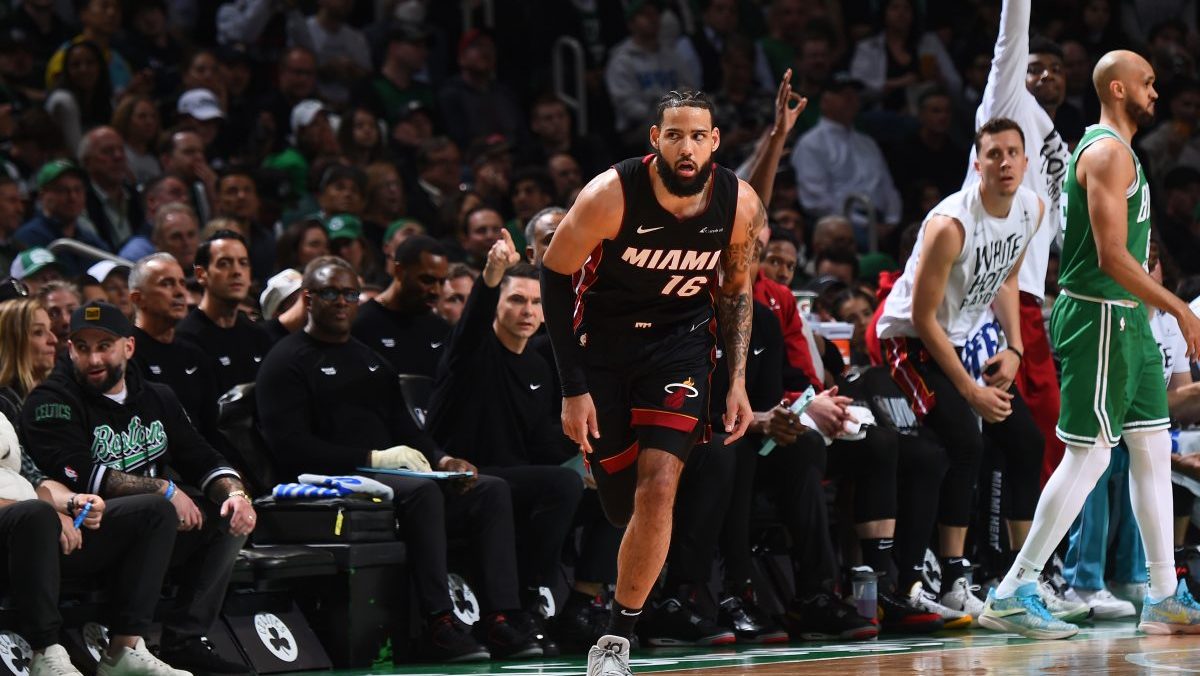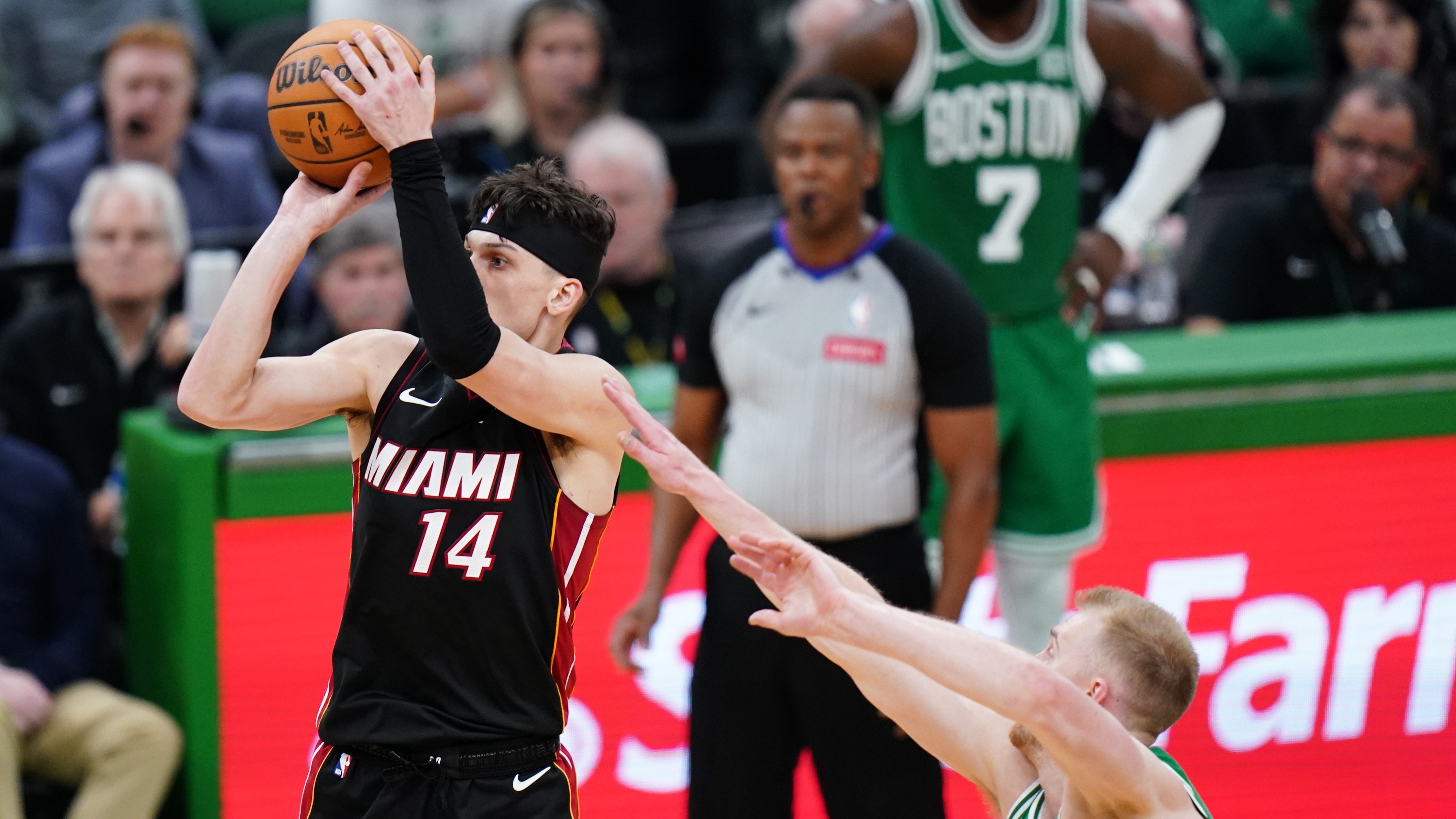Something is better than nothing. It kind of feels like a defeatist attitude, right?
Settling for less than what is deserved. But in the case of sports and COVID-19, I think it’s the only way forward.
Each week brings a new re-opening plan for sports.
Understandably, each proposal is met with trepidation. This virus has wreaked havoc on the world. There are numerous unknowns about how an individual will respond to infection. There is no treatment or vaccine.
Despite all of the unanswered questions, public health officials (including Dr. Anthony Fauci) see a way forward when it comes to life and sports.
Get the latest news and analysis on all of your teams from NBC Sports Boston by downloading the My Teams App
Most of us expect to live a new normal. We understand masks and social distancing will be a way of life. We realize our workplaces will look different than before. We comprehend the need to make concessions, even when we don’t want to.
Boston Celtics
Now it’s time for sports to do the same.
With the exception of not allowing fans into stadiums and arenas, much of what we read about returning to sports starts and ends with testing and contact tracing. Obviously, this is a necessity. If we can’t test athletes and limit exponential spread, games are a no-go.
But if I’m understanding the experts correctly, testing and contact tracing are not a panacea. We still need to take extreme precautions.
It is time to reimagine what sports will look like.
On Monday, Sean Doolittle of the Washington Nationals thoughtfully expressed his concerns about a haphazard return to the field.
One tweet stood out more than others. When discussing the requirement for testing, Doolittle talked about the number of people who would be involved.
He wrote: “So how many tests do we need to safely play during a pandemic? And not just tests for players. Baseball requires a massive workforce besides the players; coaches, clubhouse staff, security, grounds crews, umpires, gameday stadium staff, TV & media...we need to protect everyone.”
Sorry, Sean and the rest of the pro athletes out there, but we don’t need massive staffing.
Something is better than nothing. Teams and players will have to acknowledge that like many of us, we will have to do more with less.
Let’s start with my own industry: the media.
With all due respect to the BBWAA (and other reporters/broadcasters in all sports) we don’t need to be at the games. It is not ideal, but we can report and broadcast from home.
Writers can watch games on TV and conduct interviews via Zoom, or Skype or FaceTime. It will not be the same content as getting a guy in the heat of the moment, but it is serviceable. Teams can designate certain players daily (requested by media members) for pre- and postgame availability. Most reporters have established relationships with players, so if individual discussions are necessary, those can be arranged.
As for broadcasting the games on TV, we are currently producing shows from bedrooms and going live from our living rooms. It can be done.
(Pssst… industry secret. You would be surprised how often you are watching a game that is called from a booth at network headquarters.)
Play-by-play and analysts can watch feeds on monitors and call games from a remote location. Sideline reporters can arrange interviews pre- and postgame and conduct those talks remotely, or they can contribute to the broadcast in another way.
In-stadium and arena staff should be limited to essential workers only. With no fans or media allowed, stadium staff and security numbers would be greatly reduced. Any person on-site should be required to wear a mask at all times.
Same goes for managers, coaches, umpires, etc… Players should be mandated to wear masks unless on the playing field.
I know athletes are creatures of habit and comfort, but honestly, tough s**t.
You can stagger report times and limit the number of people in clubhouses and locker rooms. I also think you could ban, or at least limit, postgame showers altogether. When the game is over, you leave the premises unless the team is scheduled to leave for a road trip. Those can be staggered by bus departure.
No more in-house meals. How about teams partner with local restaurants in each city? Those restaurants, in conjunction with team chefs and nutritionists, could prepare individually packed to-go meals. (Many of these restaurants are already cooking free meals for hospital workers, so they are well versed in large scale, safe, to-go operations.) Not only would this mean fewer people on-site, it would help struggling local businesses which will not be able to operate at capacity in the near future. Win-win.
Travel is a legitimate concern, but people are still flying commercial airlines. The numbers are limited, but in-flight staff are taking every precaution. Masks would again be mandatory by airline standards. While it won’t save the airline industry, team charters will be better than no flights at all.
Hotels are already preparing for life in the time of COVID-19. Protocols are in place to limit staff, elevator use and housekeeping. In many hotels, in-room dining has been eliminated or severely restricted.
None of this will be easy or comfortable, but when the medical community gives the OK, sports can and should return.


